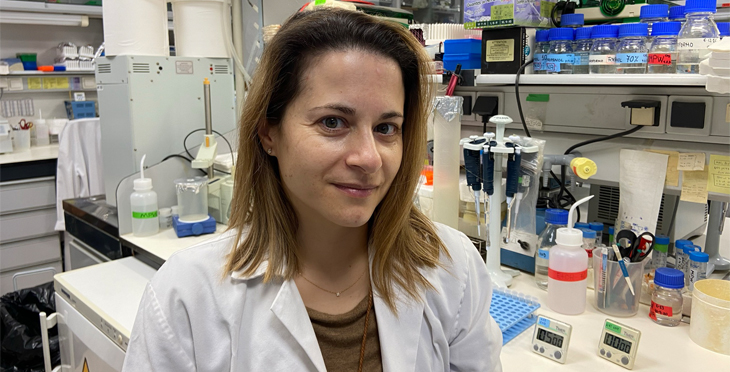Commensal gut microbiota protects genetically predisposed mice against acute lymphoblastic leukaemia

Carolina Vicente-Dueñas
Centro de Investigación del Cáncer (CIC-IBMCC)
The majority of childhood leukemias (precursor B cell acute lymphoblastic leukemia, pB-ALL) are caused by the cooperation of prenatal genetic predisposition and oncogenic events taking place after birth. Genetic predisposition is frequent in children (>1-5%), but less than 1% of genetic carriers will develop the disease. Infectious stimuli are believed to play a major role, but the critical determinants leading to oncogenesis in children are unknown. The link between infections and childhood B-precursor Acute Lymphoblastic Leukemia (pB-ALL) was proposed more than 100 years ago. The first biological evidence supporting this hypothesis came up just a few years ago in genetically predisposed pB-ALL mice. pB-ALL only appeared in predisposed mice when exposed to natural infections. The leukemia arising in these mice are phenotypically and genetically similar to the human counterpart. Hence, these models are key tools to understand the aetiology of the disease. Now we are trying to understand the mechanism by which natural exposure to common infections triggers the disease.
As there is a clear crosstalk between commensal bacteria and the immune system, the gut microbiome may serve as an integration hub for environmental signals that modulate the risk of developing B-cell ALL. This may be achieved through e.g. shaping of the immune system in general or by a direct impact on an expanded pool of pre-B cells in genetically predisposed carriers. For all this, we aim to study the role of the gut microbiome in infection-driven leukemias.
Employing a murine model of human pB-ALL (Pax5+/- mice), we show that gut microbiome disturbance by antibiotic treatment early in life was sufficient to induce leukemia in predisposed mice (48%) even in the absence of an infective environment. In the presence of infectious stimuli, antibiotic treatment increased pB-ALL incidence in predisposed mice from 22% to 63%. In longitudinal time series (≈2 years) of fecal sample 16S rRNA amplicon sequencing, we found that genetic predisposition to pB-ALL shapes a distinct gut microbiome. Artificial intelligence accurately (96.8%) predicted genetic predisposition using 40 of 20,127 amplicon sequence variants (ASVs) as proxies for bacterial species. Prior to leukemia onset, discrete FDR identified 75 ASVs whose abundance differentiated predisposed mice that developed pB-ALL from those that remained healthy.
Our results demonstrate that the gut microbiome profile provides a biomarker that might be used to identify predisposed carriers at risk to develop leukemia. Furthermore, we identify microbiome deprivation via antibiotic treatment as a risk factor for leukemia development. We anticipate that by modulating the microbiome early in life the risk to develop leukemia may be reduced.

